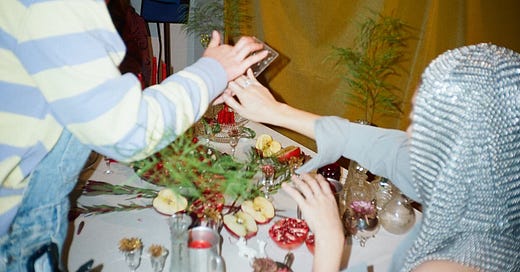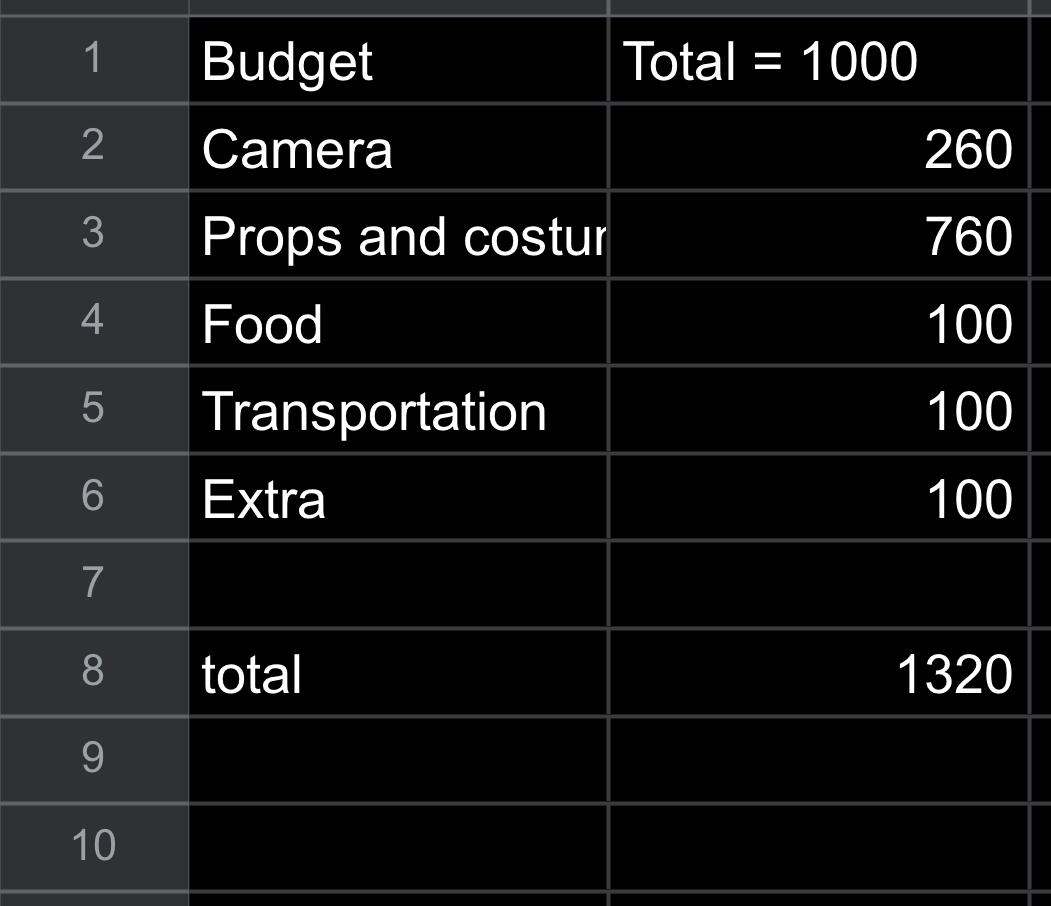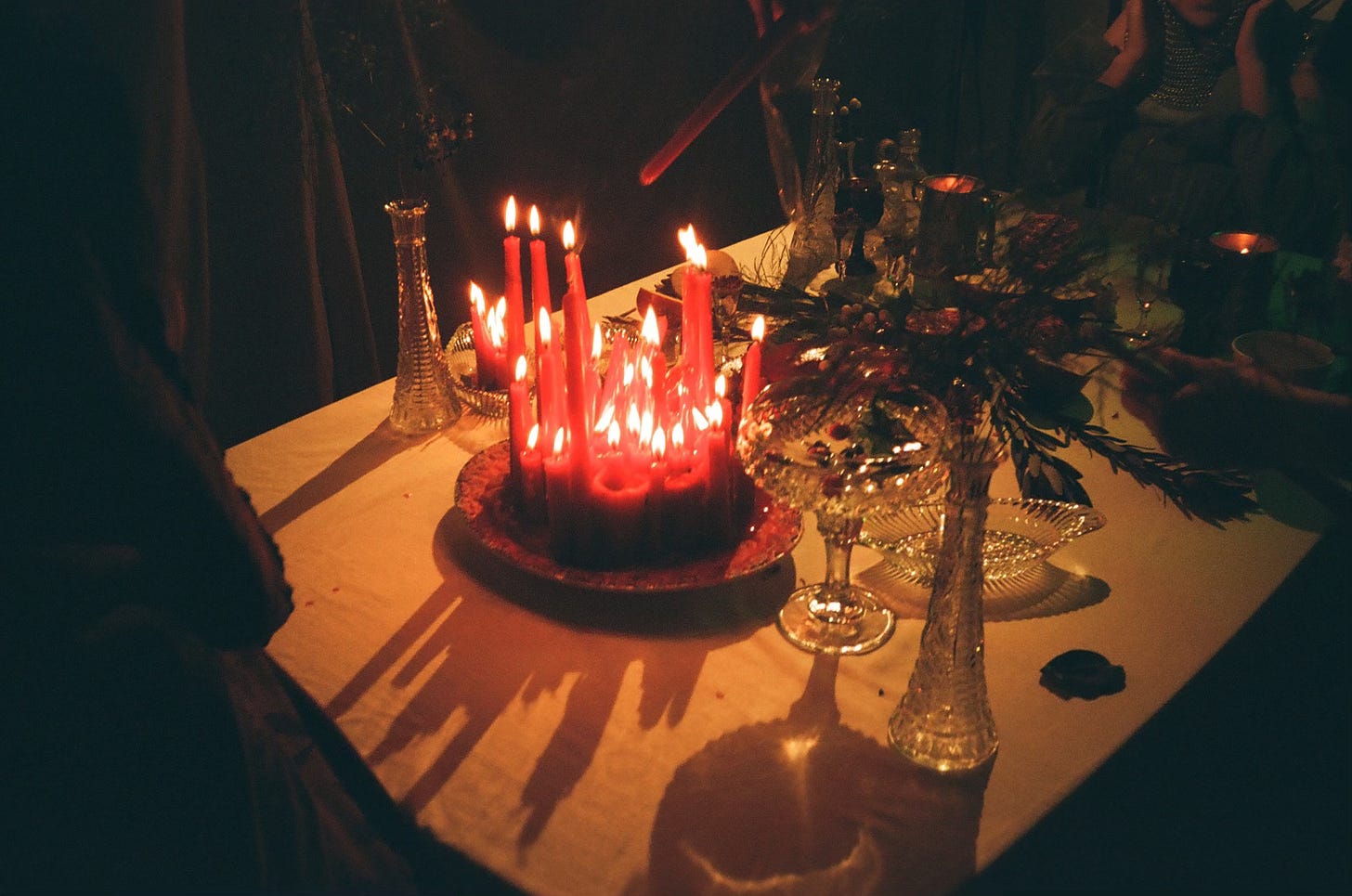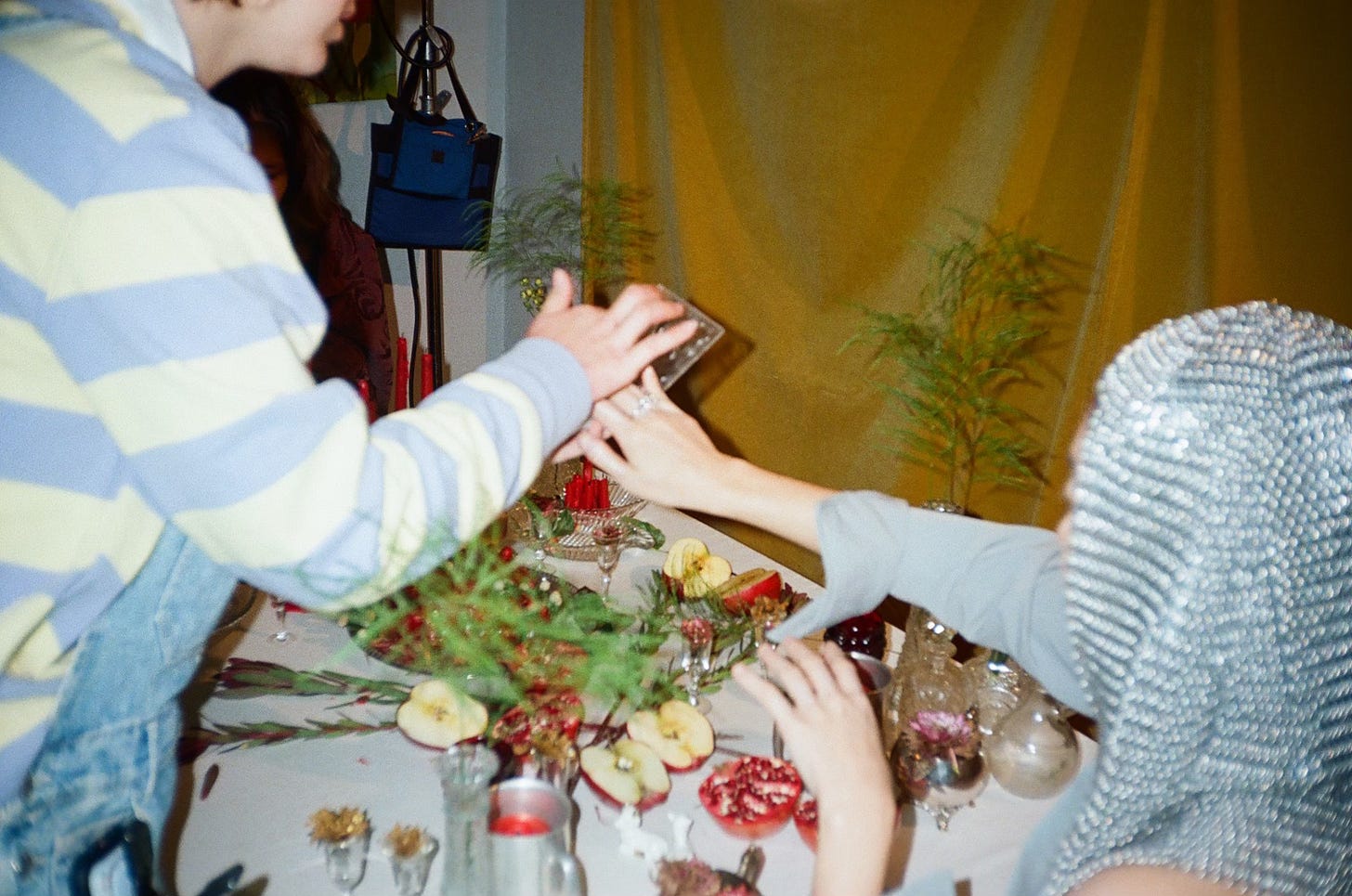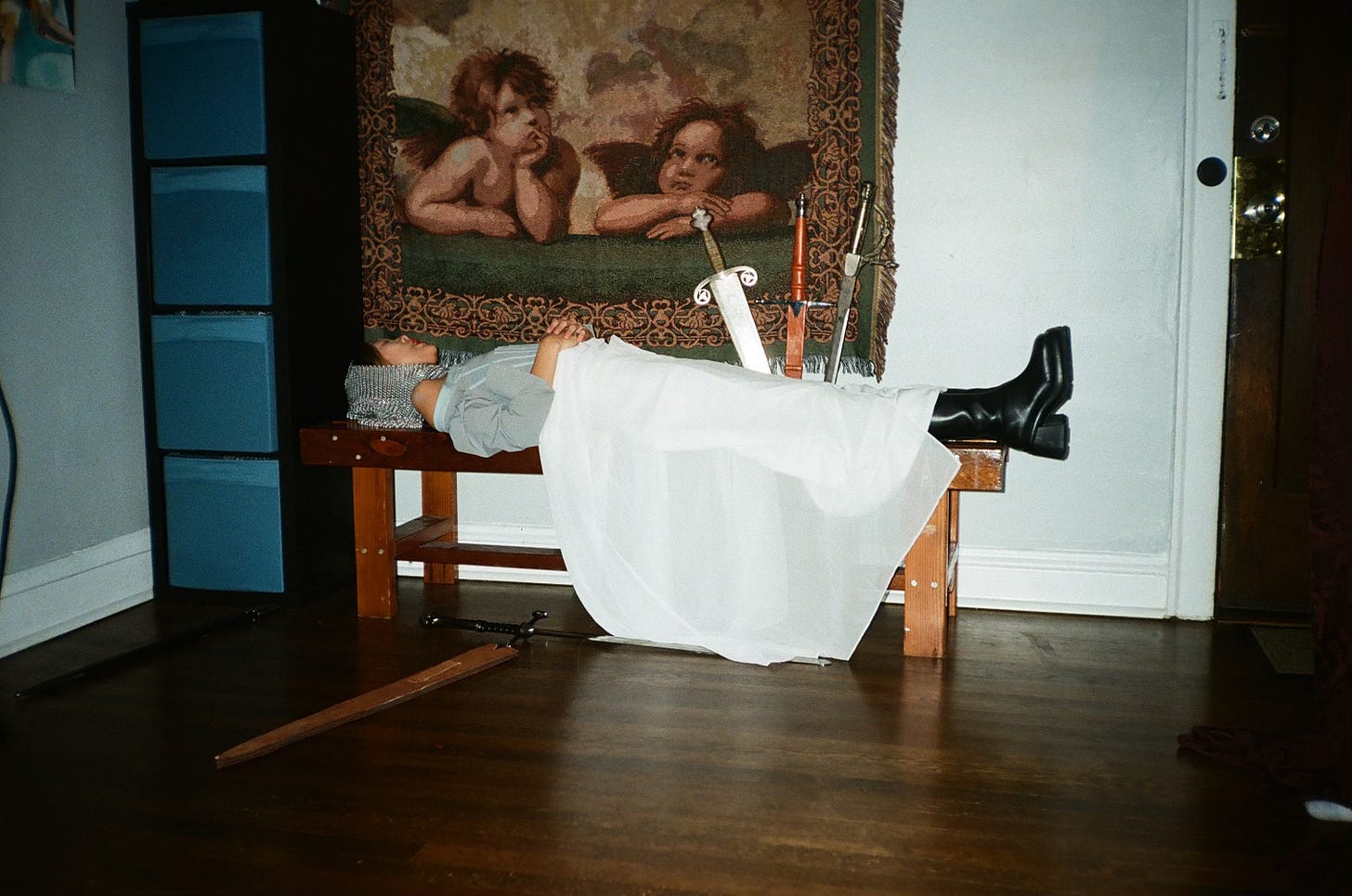How To Make Your Dream Project Come True
On budgets, borrowed chainmaille, and the logistics of renting 10 swords.
Once upon a time, I spent over $6,000 up front, out of pocket on t-shirts alone to have enough merch to sell on my first six-week tour. $6,000!!! That is almost half a year of rent in my new apartment or the price of a small used car. Back then I didn’t have any numbers to go off of, but I knew that if I didn’t have that surplus of shirts, I would never come close to breaking even or turning a profit on the whole thing. I was constantly stressed out about it, questioning if I even believed in myself that much, even after that sum and more were long gone. More than anything else, I felt frustrated that I was strong-armed by the way that touring works into spending so much money on hundreds of Gildan t-shirts because it didn’t feel additive to my life or art in any way. It wasn’t guaranteed that I’d turn a profit or make a lasting career from them; however it was a guarantee that I just spent $6,000.
I bring up my own dril tweet come-to-life because living under the undue pressures of capitalism and the thinning margins of the touring circuit has made me shift gears for my own sanity. On album two, I wanted everything to feel purposeful. If something wasn’t going to “launch my career” (whatever that means anymore) or turn a sizable profit, I still wanted to feel good about making it. To feel like I invested time and money into something worthwhile in and of itself. I promised myself I would not spend thousands of dollars on things that felt disconnected, superfluous, or wasteful because I “had to.” This was the plan.
As part of this plan, I wanted to do something I always wanted to but never had the chance: make a high-quality music video. I had this medieval, sword-filled vision I wanted to bring to life for my second single “Make Me A Sword”. Even if it was costly, I knew it would be so much fun to look back on being glammed up and swinging around swords all weekend. And I was right—it ended up being one of my fondest memories of the whole album cycle. This project would not exist without director/DP of Haoshu Sascha Deng and production/costume designer Lola Selby—both of whom were indispensable in pulling this project off on the budget we were on.
From my many trial-by-fire failures and some minor successes as an artist trying my best, here is my unprofessional and unsolicited advice on how to realize the big project of your dreams under the limitations of your reality.
Set a budget and stick to it.
This has been my number one piece of advice to all creatives managing their own finances, especially as expenses and ambitions grow. When embarking on a big project, determine a number for how much you are willing/able/want to invest in it before the project begins.
Think of it like setting a boundary on your finances. Having a specific number in mind gives you something concrete to base your decisions around before you’re in the thick of the actual creative work. It forces you to ask in a vacuum: “How much financial risk am I willing to take on?” “How much money do I have at my disposal or how much debt am I willing to accrue for this?” “What is the maximum dollar amount I feel comfortable spending on this project?” Taking the time to sit with these questions early on in my creative process has reduced my anxiety surrounding money and given me more time to prepare for any big spends.
For this video, I came up with $1,000 as my ideal, maximum budget. This number was based off of what my label advanced for the first music video ($1,000) and what I was quoted for a few years ago for a music video I never made because it was too expensive ($3,000). Putting in $1,000 felt like a good compromise of wanting to have a workable budget without stepping too far outside of my comfort zone. While ended up going slightly over in the end ($1,320), having this number early on still set a reasonable guideline for the amount of money that would go into this project.
Work with friends.
This might seem like an obvious one, but no matter who you’re looking to hire for a project, the best place to start is within your immediate network or trusted friends. It can seem so shiny and appealing to work with a big professional with lots of cool credentials and amazing work, but they tend to have higher rates and less wiggle room especially if you’re reaching out cold. Leaning on friends is great because a) you can help each other build experience b) there’s more of a mutual understanding that no one has enough money / more room for flexibility or trades and c) because friends are nice and cool and it’s usually fun to work with them.
I knew Sascha through the Chicago music scene and some mutual friends. I knew she had directed a video for her band Sunshy which I really liked. Based on her portfolio and knowing her personally, I felt really good about asking her to direct this project. Once she was on board, Sascha brought in Lola for the production design/costuming, and later, the rest of the crew that worked the shoot on the day-of. All of them were people that Sascha had known and worked with previously, some of whom were our mutual friends, and it made the shoot feel so familiar, easy, and fun.
Prioritize your wants and needs.
Once you have your budget and your team assembled, make a mental or physical list of what is most important to you to get the end result you want. Is it having the perfect costume? More gear that you can use for future projects? Shooting on Super 8? Knowing up front what you value most is critical so that when corners need to be cut, you know which ones to cut first or where to get scrappier. Especially when you work with a team of people (who all want more money for their portion of things), it will help you negotiate your budget and your collaborators’ different needs and wants.
For this video, we knew that we needed 10 swords to recreate the tarot stills and that flimsy, fake ones would look bad on camera. We all agreed that allocating a bigger portion of the budget to the sword rental was important to give the video depth and authenticity. Our second priority was securing the right camera equipment, especially lighting, because we were planning some late night and early morning shots. Before doing anything else, we grabbed numbers for those items, knowing they would be our most important and least moveable expenses. Carving out the big expenses first made sure we covered our bases before we got carried away with the rest.
Reuse, borrow, make, thrift (in that order).
This point kind of ties in with #2 and is what I learned most from working with Sascha and Lola. Sascha seems to know a guy for everything and Lola’s mind palace appears to truly endless. Creative sourcing prevented the props budget from taking over the budget (more so than it already did). Before shopping for anything new, we looked at things I already had in my possession and we ended up using a corset top from my closet for the costume, my yellow velvet curtains for the backdrop, and a white bedsheet as a tablecloth. Easy peasy!
If it’s not something you own nor something you think you would use again, asking around to see if a friend or friend of a friend has one can help you save a pretty penny. One of the biggest lifesavers of this project was Gail Everding who is an amazing chainmaille artist based in Chicago who lent us the hood for the whole shoot. Paying for a rental or buying one could’ve been anywhere from $40-$100 extra (which goes a long way at the thrift store).
Figuring out some points where it’s worth it to put a bit more time to save some money can be really differential. Instead of spending $100-$150 on a heart-shaped cake done by a professional, Lola bought a cheap cake, some pre-made frosting, and lots of red food coloring to shape and ice the cake we needed. Same for the dozens of candles that were melted down to different sizes to make a massive, red center piece. It was a true labor of love (or hate) that not only made for some really unique looking pieces, but really helped us stretch the budget as much as possible.
Enjoy the process :)
One thing that I’ve really struggled with in turning my band into a legally recognized small business and as someone who sees creative work as labor is the amount of guilt I feel when people offer to do things for cheap or free, even when I can’t always afford to pay much more than that. As much as I think it’s useful to frame creative work as labor to advocate for better healthcare and pay for artists, it can also limit you to the possibilities of mutuality outside of capitalism—of giving and receiving, of working on something because you simply want to. I’m still working on appeasing my guilt with gratitude for the creative and kind people in my life. I feel really lucky and surprised that the people who worked on this video were down to work on this video simply because they wanted to—it reminded me of all the shows I’ve played for $20 or $0 for many years. We’re all just passing around the same $20 - but it’s still nice to know how to stretch it when it’s yours. ∎
My sophomore album Nothing Sticks is out on 3/21 via Get Better Records. Listen to “Make Me A Sword,” out now on all platforms. You can also pre-order it on vinyl, cassette, or digital with new shirts inspired by the music videos. If you’re in New York or Chicago, we’ll be playing two special album release shows on 3/30 and 4/13 respectively. Hope to see you there!

